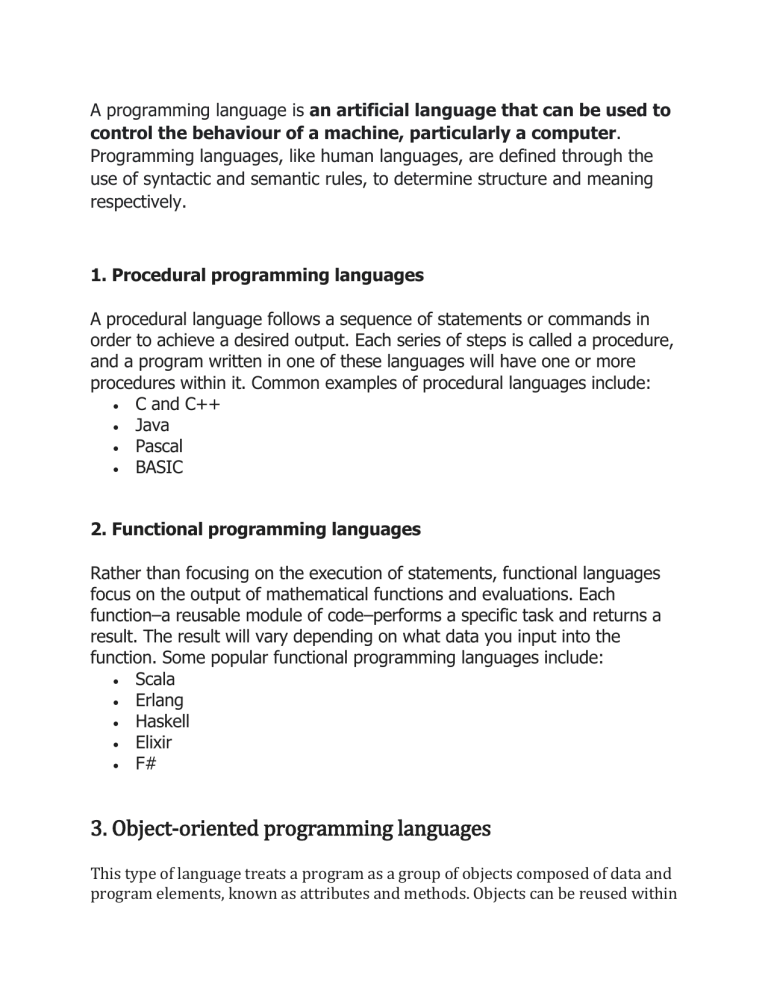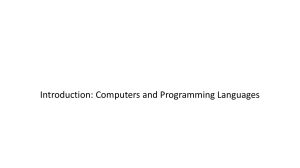
A programming language is an artificial language that can be used to control the behaviour of a machine, particularly a computer. Programming languages, like human languages, are defined through the use of syntactic and semantic rules, to determine structure and meaning respectively. 1. Procedural programming languages A procedural language follows a sequence of statements or commands in order to achieve a desired output. Each series of steps is called a procedure, and a program written in one of these languages will have one or more procedures within it. Common examples of procedural languages include: C and C++ Java Pascal BASIC 2. Functional programming languages Rather than focusing on the execution of statements, functional languages focus on the output of mathematical functions and evaluations. Each function–a reusable module of code–performs a specific task and returns a result. The result will vary depending on what data you input into the function. Some popular functional programming languages include: Scala Erlang Haskell Elixir F# 3. Object-oriented programming languages This type of language treats a program as a group of objects composed of data and program elements, known as attributes and methods. Objects can be reused within a program or in other programs. This makes it a popular language type for complex programs, as code is easier to reuse and scale. Some common objectoriented programming (OOP) languages include: Java Python PHP C++ Ruby 4. Scripting languages Programmers use scripting languages to automate repetitive tasks, manage dynamic web content, or support processes in larger applications. Some common scripting languages include: PHP Ruby Python bash Perl Node.js 5. Logic programming languages Instead of telling a computer what to do, a logic programming language expresses a series of facts and rules to instruct the computer on how to make decisions. Some examples of logic languages include: Prolog Absys Datalog Alma-0 WHAT IS AN ASSEMBLER An assembler is a program that takes basic computer instructions and converts them into a pattern of bits that the computer's processor can use to perform its basic operations. WHAT IS AN INTEPRETOR An interpreter is a computer program that is used to directly execute program instructions written using one of the many high-level programming languages. The interpreter transforms the high-level program into an intermediate language that it then executes, or it could parse the high-level source code and then performs the commands directly, which is done line by line or statement by statement. WHAT IS A COMPILER A compiler is a special program that translates a programming language's source code into machine code, bytecode or another programming language. The source code is typically written in a highlevel, human-readable language such as Java or C++.






